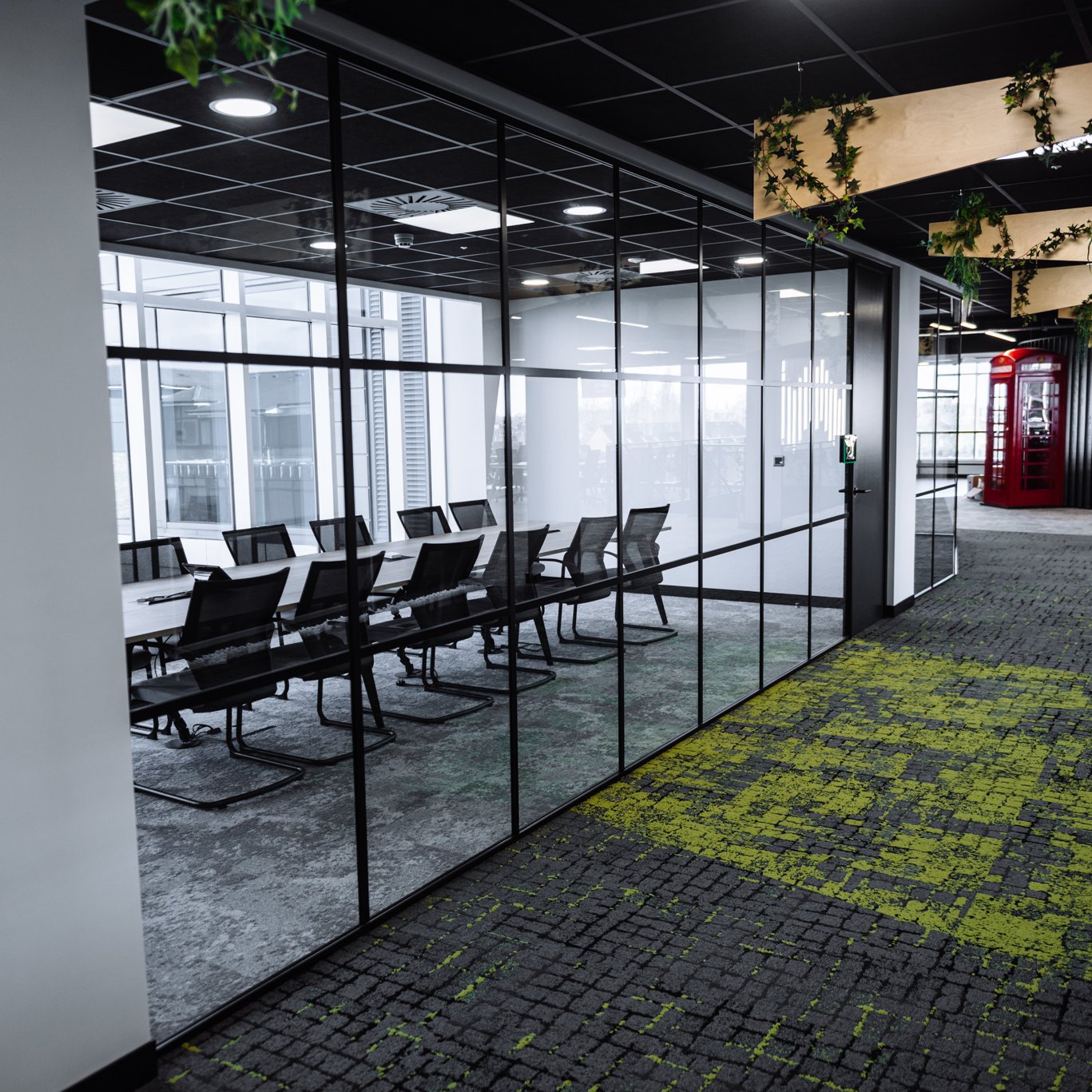It’s been proven over and over again that successful companies are the ones with happy employees. Why? Because happy, comfortable and confident employees are the ones to jump when something needs fixing. They’re healthy and mentally resilient, as well as productive, motivated and inspired. And they will always go the extra mile for a company that has done so much to keep their needs at the fore. Turnover of staff is one of the biggest costs in business, with both recruiting and training new staff costing a fair proportion of their first year’s salary. So it’s in everybody’s interest to create a culture of happiness at work.
But how?
We’ve formulated this list of the top 10 easy ways to improve office culture, so that your organisation can see a boost in positivity – leading to employee positivity, productivity, and staying power.

We all work differently, and have a different ethos about work-life balance. Some employees will work 100% 9-to-5, but when they shut down at the weekend work won’t cross their minds until monday morning. Others are happiest working at a slightly slower pace but working when they are in the right mindset – sometimes in the evenings and at weekends.
However staff choose to work, the best way to nurture their productivity is to support a work-life balance. The pandemic has made that balance so much more ‘real’ to so many employers – gone are the days when we would all gasp in horror when a child’s head comes poking into shot on that important Zoom call. Having more understanding for the lifestyles we all juggle enables employees to feel free to prioritise important tasks like appointments, whilst knowing they won’t be punished.
How to promote work-life balance? Trust, and flexibility. 81% of 3500 employees polled placed importance and value on flexible working, and many predict that agile working is the work environment of the future. Read more about agile here.
Natural light and a variety of work spaces within the office is just one step towards making your office space welcoming and comfortable. Activity-based agile work environments can be the best way to promote this, as your employees can fit their task to their environment. We run through some office space alternatives here.
‘Recreational’ space for employees allows your employees to get to know each other beyond work, encouraging those relationships to be more profound and in depth – crucial for when collaboration is on the table. If you have room, make space for some extra-curricular activity, from a ping pong table to outdoor basketball hoop – and encourage their usage with a weekly after-work treat, for example a Friday beer or glass of prosecco. Introducing the ‘game’ into this extracurricular activity maintains a little sense of fun competition, whilst allowing employees to get a little exercise and blow off some steam after a long week. Better team cohesion is only ever going to make your company stronger.
An open door policy is a mechanism allowing employees to communicate problems or difficulties to someone higher up the food chain – often skipping over their direct supervision, as this person may be a factor in the problem. Employees report higher satisfaction levels, and are more likely to stay in a job, when they feel listened to and appreciated. Transparency from the people at the top helps to negate conflict – especially the type which originates when employees feel left out when a company has decided on substantial change without consulting its staff. Making it known that you are always available for questions, comments and concerns allows everybody to feel valued, and not to feel like there is a ‘middle man’ – or two – between them and the business’ leaders. An open door policy also requires you to set boundaries, but it may result in better freedom of expression, lower levels of unhappiness at a lower level in the business and allow you to fix behavioural problems as they arise. It also allows for a more transparent reading of how staff perceive their workplace, and their levels of job satisfaction.
Here at BI we always suggest quiet space – whether an isolated nook or a whole booth – as a space for quiet and focussed individual tasks. Quiet areas are a space for employees to retreat to when they need to be able to concentrate, but also when they’re in need of solitude. Providing that interruption-free zone can really cut stress levels, improving both their mood levels and their productivity. Google has even gone so far as to provide ‘nap rooms’ – recognising the globally undervalued potentiality of being well-rested and its power to boost productivity and performance.
Knowing what to do, and how, are crucial steps through an employee’s training, and remain crucial through their working career. No one wants to be micromanaged, but an employee sat

unsure of their next task is going to feel vulnerable and useless (not to mention that they’re a waste of resources). Make sure your employees are always rewarded for proactively seeking further education, but also make sure to be transparent about the business’ collective goals and sense of purpose.
Quarterly meetings can be great check-ins for company-wide awareness; with one team presenting their progress to another, the whole company is kept on the same page rather than only the management seeing how jobs are progressing. Working together to a mutual goal enables a sense of cross-team productivity rather than unease and rivalry that another team is ‘more important’ or more financially viable than yours.
Office culture can go bad. A mixture of the environment created and a negative employee or two can suddenly cast a once-happy environment over the edge. Identify the behaviours you respect in your employees – be that open collaboration, proactive idea creation or timely submission of works – and loudly celebrate those accomplishing these tasks.
Instead of punishing negative-seeming behaviours, this drives all employees to work towards this rewards system. Be careful about the behaviours you reward, though – rewarding sycophancy or superficial work eagerness is poisonous to the employees working harder and quieter. This is an important way to improve office culture, but it must be approached intelligently and with care.

Creating some sort of environment in which an employer can raise any concerns or suggest any novel ideas is a great way to boost office culture, and make every voice feel heard and valued. As well as working on problem-solving, listen so as to make the best of their innovative ideas – the positive as well as the negative! Creating a weekly or monthly forum, or an online environment, in which employees can be heard, can be a really useful way to transparently understand employee culture.
Mammoth CMS provider WordPress enabled its staff to be heard by holding ‘town hall’-type meetings, where management and lower level employees are collectively heard. This study found that 65% of employees who don’t feel like they can approach their managers with a question feel actively disengaged from work.
Communicating your company goals, or mission statement, as well as your values across the board, is crucial in forming shared goals. Instead of feeling like an invisible cog, by extrapolating on the company’s intent, direction and vision, you are welcoming them into the team. Communications shouldn’t just come from on high, though. It’s important to encourage communication in the other direction too – as mentioned above, listening is a crucial skill to improve office culture.
Communicating your ‘brand values’ throughout the team – and sticking to them, not cynically skirting them – is enough to bring out loyalty. Explaining why change is necessary, and initiating employees into the ideas early, is so much more valuable than explaining just the change itself further down the line.
Different activities may need peace and quiet, but collaboration is crucial to building a happy team and a happy business. Collaboration reinforces the idea that everybody is a valuable asset to the team, and a culture of collaboration encourages cross-team knowledge-sharing and active communication. Workplace failures often come down to a lack of communication and collaboration; in fact 86% of both employees and executives blame a lack of communication and collaboration for workplace failures. Lack of communication leads to redundancy and duplication of work, and brings up the levels of frustration in a team. Keep inter-team and cross-team dialogue lines open at all times, keeping every team member’s responsibilities and jobs in line with the greater goal of the team or whole company.
We hope this list of 10 ways to improve your office culture has been thought-provoking. It can be easier said than done, but here at BI we believe in the power of collaboration and many minds, so transparency, respect and communication are always going to be the key ingredients to any great office – alongside great design, of course! Get in touch with BI today to see what office updates we could suggest to transform your office space.